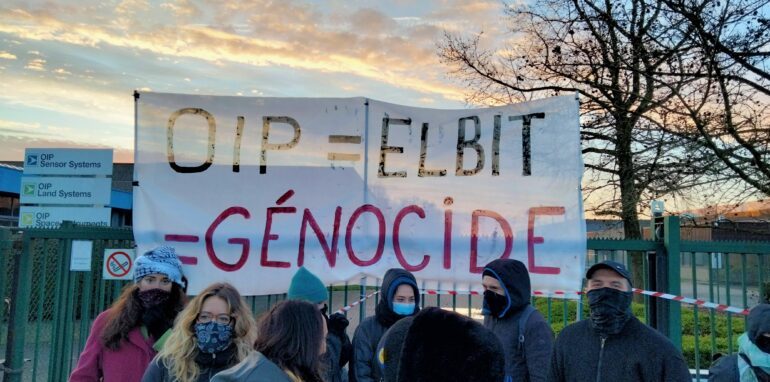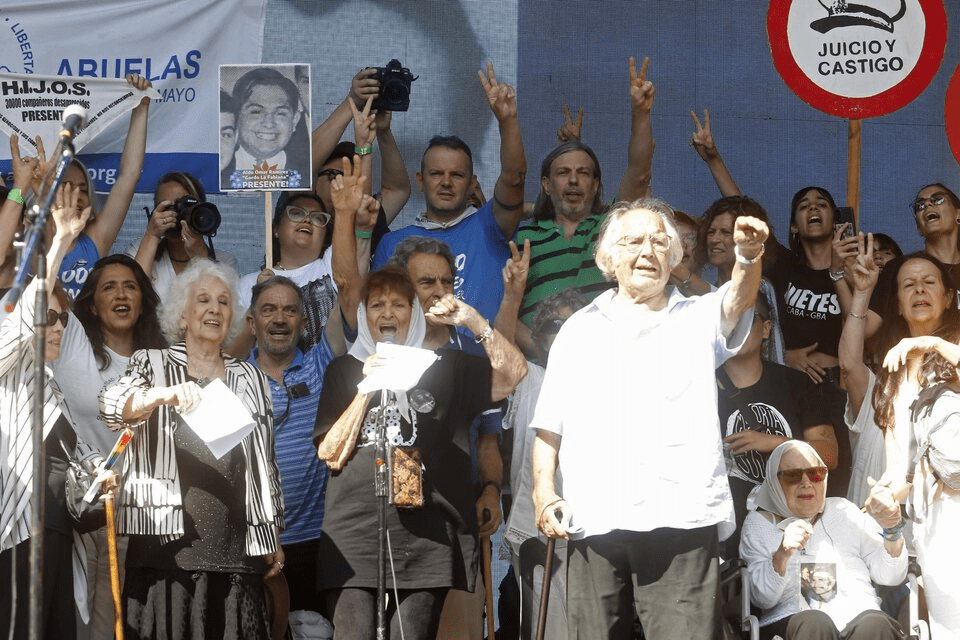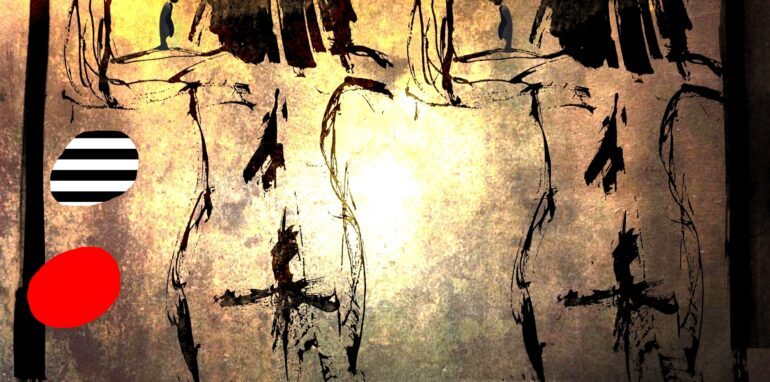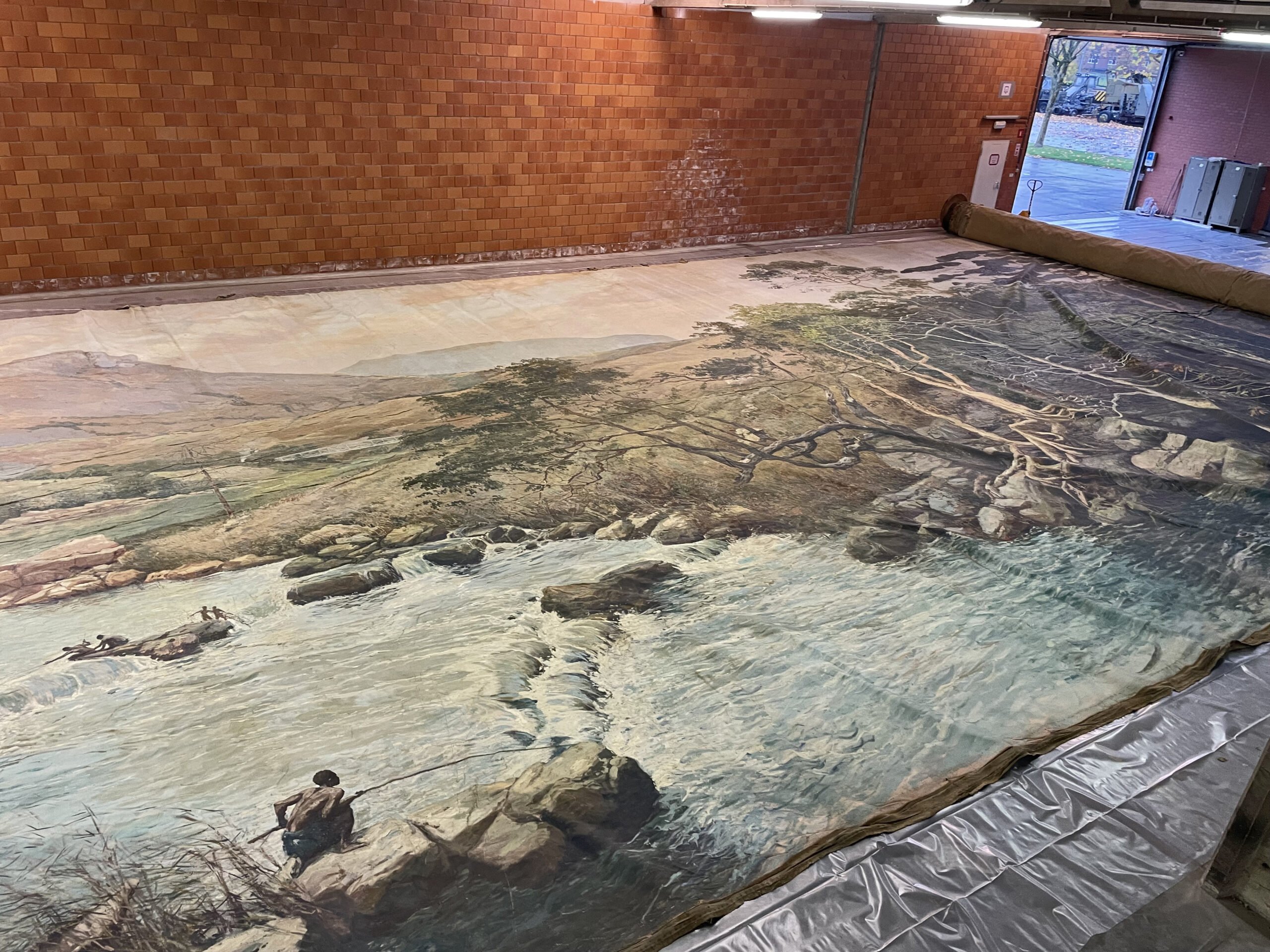***This paper was presented by Jan and myself at the Babylon Seminar and parts of it were used for the book “Ethnographic Fieldwork”. I have revised it recently at the demand of many ‘fieldworking’ students***
Blommaert, J. & J. Van der Aa (2009, revised 2021).
Presented at the Babylon Seminar Series, Tilburg, Tilburg University, March 17, 2009.
- Panoptical observation
You observe all the time. Whenever your eyes and ears are open and you are in a clear state of mind, you register things that strike you. In everyday life we don’t have a word for this (we just do it); in fieldwork we call this ‘observation’. And the rule is: you start by observing everything and gradually start focusing on specific targets. The main instruments for that are your eyes, your ears, your mouth and your notebook, and you can use visual and other recording devices in support of that. Saying that you observe ‘everything’ is not very helpful of course. Therefore, fieldnotes are a mix of several levels of observation. Make separate columns in your field notebook.
You can only watch if you know where to look, and that depends on understanding, where you are and what you’re doing there – here is the issue of preparation again. But the point is that the beginning phase of fieldwork is a phase of finding your way around a particular place, registering faces and voices, discovering itineraries to get from one place to another (and for those working in educational environments, schools can be awfully complex spaces, to be sure). You have a particular topic in mind – say, observing the classroom literacy practices in the third grade – and your attention will quickly go in that direction. But pending full focus on these bits, you observe indiscriminately in an attempt to get an overall image. You try to see all the teachers and staff, discover the whole of the school, make walks in the neighborhood so as to know and understand where the pupils come from, and try to get a more or less precise idea of what goes on there. Make sure you have this general image before you actually move in to your focal site, the third grade classroom. It will help you grasp what goes on there, as the school is obviously a context of major importance for the class. You may discover that the third grade teacher has an excellent reputation among his colleagues; everyone speaks highly about him. But soon after that, you may discover that his reputation is mainly built on his rigorous insistence on strict discipline, that he is known for being severe on underachievers, and that his class actually has a very high failure and drop-out rate. Knowing such things creates, as said earlier, patterns of expectation: when you now enter his classroom you know more or less what you will encounter there.
You can start zooming in on particular aspects of that now: the struggle of the underachievers, the way in which the teacher makes judgment calls about who does well and who doesn’t, the criteria he appears to use for that (e.g. ‘clean’ and aesthetically elaborated writing as opposed to correct but rather sloppy writing) and the way in which his system of discipline has effects on the pupils’ behavior (e.g. how some try to ingratiate themselves with him by volunteering for housekeeping tasks, others rather remain silent than give a wrong answer …). You also find out that some of the most obedient and servile pupils in class are vitriolic and rebellious about the teacher during the break, and that some of the silent ones in class are highly vocal and articulate during breaks. All of these small things now start making sense as parts of a broader pattern, the particular learning regime created by the teacher’s focus on discipline and achievement. Your search around the school has also yielded another insight: the teacher has a good reputation among his peers because the school has a poor reputation, and he is seen as one of the teachers who ‘gets results’, makes no compromises with weaker pupils, and maintains a regime of learning that matches that of ‘better’ schools. Small things start becoming meaningful in relation to bigger things, and you begin to see how these bigger things have their grounding in small things. You start seeing how the events you observe form part of a system. Finding out such things demands, as you now can see, observation at various levels, different times and places – the classroom during class periods, the breaks, the school more generally, the staff common room, and so on. And it also (even more importantly) demands making connections between bits of information gathered at these different levels, times and places – this is the work of contextualization: things you find here need to be connected to things found elsewhere in attempts to establish contextual connections (“this is an effect of that”, “this belongs to the same category as that”, “this can only be understood in relation to that”…).
- Making recordings: The Archive
Part of the observation process (but as we have seen, by no means all of the observation process) consists of making recordings: audio, video and/or visual recordings; we should add ‘collecting’ as well: collecting copies of pupils’ notebooks or coursework, or of tests you developed and administered; collecting samples of the teaching materials used by the teacher, and so on. The finality of recordings is dual. On the one hand, these recordings provide you with the ‘raw data’ that will eventually substantiate your analysis as ‘evidence’ and ‘examples’. They will be the bits of first-hand information that will be crucial in making your account of events stick academically.
So your recordings have an important function after the fieldwork. On the other hand, recordings also have important functions during fieldwork. They provide you with an archive of your own research. Recordings made in the beginning of fieldwork will be different from recordings made at a more advanced stage of your work, the reason being that your gaze has shifted towards more specific topics and events. Consequently, whereas in the initial stages you would be highly satisfied when you made a long audio recording of a whole class period, including all the not-so-relevant bits, such recordings would be seen as less than satisfactory later on in the game. The collection of recordings, in that sense, documents your own progression through the learning process, it testifies to the way in which you yourself have become familiar with what goes on there. This is very important, because one of the features of the learning process is that you tend to forget where you came from. Things that strike you as strange and remarkable in the beginning cease to do that soon after, and after some time all kinds of initially remarkable things are taken for granted because they have become part of your own outlook on things. Yet, your initial ignorance and amazement are crucial: they provide the beginning stages of ethnographic understanding, and the accumulation of knowledge during fieldwork is exactly the process you need to document and establish. The archive of your fieldwork ideally contains everything you need to reconstruct your itinerary from being an outsider to being a knowing member of a community, someone who now can analyze confidently what went on.
Photographs can be an important help in the creation of your own archive. There too, you will find yourself making different pictures in the beginning and towards the end of your fieldwork. In the beginning, you will try to capture documentary things, things that assist you in finding your way around. Gradually, the photographs will become ‘data’: snapshots of children writing, of the teacher lecturing – things you perhaps think can be useful as illustrations in your dissertation and/or in publications or presentations afterwards. You will start taking pictures of pages from the notebooks or textbooks used in class, of the blackboard, of drawings made by pupils, of notices displayed in the school; etc.
And afterwards, all of these images will be tremendously helpful in reminding you of what places, moments and people were like. Looking at a picture will trigger a vivid memory of the moment when you took it; it will trigger the recollection of an anecdote that might exactly be the thing you need in a particular place in your analytical argument. Usually, making recordings is considered to be an intrusive measure. In fact, it is, of course, because what you do is to capture something which normally remains ‘on the spot’, and ‘export’ it, so to speak, to other times and places. Words spoken by someone without further thoughts can become crucial building blocks in someone else’s academic argument; they can find their way into published papers, and they may be accompanied by critical remarks about the words and the one who uttered them. Innocent utterances may become politically sensitive ones due to interventions from the researcher. Recordings are always sensitive materials, things that people may experience as threatening.
Normally, therefore, people will impose conditions on recording. They will insist that you obtain official permission for making recordings (from the principal, the teacher, the pupils’ guardians, sometimes the higher authorities as well), they may insist that you leave a copy of the recordings with them or that your recordings will be destroyed after the completion of your research, and so on. They might also request that you do not record certain things, or that you restrict your recording to specific times and occasions (“not now” is a frequently heard answer to a request for making recordings). You submit to these conditions of course, but you should make sure that people understand, and agree to, very clearly: That your recordings will be used exclusively for academic purposes, but that they are essential for your academic purposes. In other words: it is no use if they allow you to make recordings but insist on the destruction of your recordings immediately after the completion of research. These data should be granted a life beyond the PhD, since they are scientific materials that will only be treated scientifically.
Your own integrity is at play here: you will have to convince people of your good intentions. You can commit this to paper in a protocol, you can refer to existing ethical guidelines to which you subscribe and against which your conduct can be measured, and you can invoke higher authorities by producing written assurances from your supervisors or research officers. That the scientific use of these recordings will involve a process of modification of these data, such that the personal interests of the recorded individuals are protected: all names will be changed, faces may be made unrecognizable, people will be consulted in cases of doubt. This too can be committed to paper in a protocol. Sometimes the effects of this are cumbersome. Imagine video data in which precisely the direction of the pupils’ gaze is essential to your analysis. Ethically, you should cover the eyes of the children visible on the video stills, which is rather awkward if your analysis is. We disagree with a number of esteemed colleagues and ethics committees on this and invite students to seek a second opinion on this point. Sometimes the conditions imposed on recording and use of recorded materials are absurd, curtailing the essence of research: the freedom to return to earlier work and revisit it in light of new developments or evidence. Such multiple and repeated use of existing data is essential if we want to prevent research from becoming an atomized enterprise, consisting of a myriad of unique but unconnected (and unconnectable), isolated pieces of work. We are familiar with the ethical issues involved in this and they need to be taken very seriously; but we have successfully negotiated our freedom to use recorded data beyond the particular project on a large number of occasions, often against all odds with very stubborn interlocutors. Our experience is that people, even if they are initially apprehensive, quickly grasp the importance of the argument for free use of data for research purposes.
A way out is to make a print of the stills, put them on a lighted glass plate, put a blank sheet on top of it and make a drawing of the picture. This effectively anonymizes the children, while it affords you enough detail to state your case about gaze direction. Since recording is considered sensitive and intrusive, don’t make your recording sessions a turkey shoot. Don’t start recording anything and all the time; make arrangements and appointments, prepare your recording sessions well, and record things you believe will be maximally salient and informative. Better return with a limited collection of high-quality recordings than with a pile of recordings of which only a small fraction will deserve further attention. Make sure your recording devices are in good working order – try them and double check.
As for the placing of your recording devices: it is an old tradition to focus on the teacher in classroom research, but one must realize that a classroom (and this counts by extension for almost any social environment) is polycentric, it has more than one focal point. The pupils are also a ‘centre’, and ideally, your recordings would reflect what goes on in relation to the different centres. You want to capture the teacher’s voice as well as that of the pupils, and if the principal walks in or a piece of music is played during a class period, you also want this to be recognizable from your recordings. That means that you use a wide-scope microphone (not a ‘pointer’, a microphone that captures sounds from one direction only) and put it in such a position that everything you want to record can be recorded. But remember: a recording is never comprehensive, there will always be ‘blind spots’ – a problem which is more outspoken with video than with audio recordings. Therefore, if you are physically present during the recording session, make notes of what you see and hear; that creates a secondary, back-up record of the session, and it can fill in important blanks when you start analyzing the recorded materials (e.g. it is often hard to identify who speaks from a recording, especially when there are group discussions or multilateral interactions going on; your notes can then tell you who participated, what they said and so on). Remove your equipment immediately after the session and check the quality of the recording. If the circumstances allow that, listen to the whole recording as soon as possible after the recording session, and make notes while you listen. Do not postpone this: your memory of faces, voices and particular events will fade quickly, and whereas you will still be able to recognize a voice as that of a particular pupil a few hours after the recording, you won’t be able to do that a few weeks later. You can do this in your fieldnotes or in a separate document. In that catalogue, you give every recording an ‘identity tag’: a number or a code, along with the date, time, place of recording, the participants, and either a brief description of the contents or a number of key words that distinguish that particular recording. This will be of immense help afterwards when you want to dig out particular parts of your corpus for purposes of transcription and analysis.
We have emphasized the notion of an archive of your research already. What you collect during fieldwork are building blocks for an archive that documents your work and your own gradual process of learning and understanding. You construct this archive for yourself, not for your supervisors or your doctoral committee, and you will need it for any further step in the process of research. It is all about building a disciplined and structured recollection of the events you observed.
- Collecting Rubbish
Ethnographers are notorious for collecting rubbish. In their anxiety to overlook a single piece of information that might be the key stone to their interpretation, they collect everything: objects, texts, newspaper clippings, audio and video tapes, books and booklets, flyers, announcements, advertisements … name it, you will find it in the ethnographer’s bags upon return to the home or academic base camp. All of this is collected in an attempt to get as rich a picture as possible of the environment in which the fieldwork was done. It combines with photographs, recordings and fieldnotes into one huge pile of materials that, together, allow us to make a careful reconstruction of the place, time and occasion on which we did our work.
It helps us remember and recall features, details, characters, an atmosphere we found crucial for our understanding of what went on. And since we are always distrustful of our own memory, we collect it, catalogue it, describe it, and carry it with us back home. I am saying this to the chagrin of mothers, partners and roommates and I shall be cursed by them: do collect that kind of rubbish. It is very much similar to making photographs, recordings and fieldnotes: they are essential ingredients of your record, of the archive of your own journey into knowledge.
And they respond to the same laws: you will collect more rubbish in the beginning than at the end of your fieldwork, because again, you will know more about the place and less will be new and amazing. So do collect, and collect well. There is only one rule of thumb here: like with fieldnotes, take everything that closely or remotely looks of interest. Don’t be too restrictive, and even if it doesn’t tell you much on the spot, it can always become a very relevant bit of data later on. There are a good number of cases in which what looked like a side-issue on the spot gains prominence a lot later. It can even become a new project, or ideal data for an article. I’m speaking from experience here.
Use your fieldnotes to catalogue them, offer small bits of description in your notes, documenting what this particular bit of rubbish suggests or tells you about the things you’re interested in. Perhaps also indicate how it could be used later in your analysis: you’ll forget what it meant later in your fieldwork or after your return, and things that looked like valuable information then can quickly become just scraps of paper later.
- Conclusion
Your bag is full now, and what do we have? We have background information collected during the preparation of your fieldwork; we have observations that found their way in your fieldnotes, recordings and visual materials, and we have recorded interviews. We are ready to go home now and start working on our analysis and on the daunting task of writing all of this up in a dissertation or publication. Note that what we have in our bag is a widely divergent collection of materials. Ethnographic fieldwork data are not uniform but widely diverse, ranging from material artefacts over subjective notes to recordings and interviews and photographs. Together they create an archive of your own learning process. They tell a story of ‘the field’, to be sure, but even more eloquently they tell a story about yourself in the field, of how you became someone who started understanding things in a strange environment, thus gradually reducing the strangeness of that environment to such a point where it became a familiar place. This, then, will have to be carried over into your analysis.




















